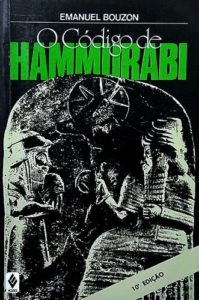O Monte do Templo: o sítio arqueológico mais politicamente volátil do Oriente Médio.
Leia
Jerusalem’s volatile archaeology – By Malcolm Billings – BBC News: 25 April 2006
One of the most visited archaeological sites in Jerusalem is also charged with emotion that has erupted in riot and bloodshed.
Known as the Western Wall Tunnel it runs under the old walled city and along the length of the western wall of what was once the Temple of Jerusalem.
Built by Herod the Great in 20 BC, the Temple itself was destroyed by the Romans in the year 70.
All that survived was the rock platform – the Temple Mount – on which the Temple was built and the massive retaining wall that supported the foundations of the building.
The Temple Mount, or the Haram al-Sharif as it is called by Muslims, meaning noble sanctuary, is holy to both Jews and Muslims.
For most of the time since the 7th Century it has been in the possession of Muslims, who believe it marks the point where the Prophet Muhammad ascended into heaven.
Archaeological embargo
Jews believe it is the site of the original Temple of Solomon, and where – in the story of Genesis – God tested Abraham’s faith by ordering him to sacrifice his son Isaac, before telling him to stay his hand.
Today, a beautiful Muslim shrine built in the 7th Century, the Dome of the Rock, covers the outcrop of stone where these events are supposed to have taken place.
To add to this eventful history, the building was turned into a church during the time of the Crusaders in the 11th and 12th Centuries.
The crescent on the top of the dome was replaced with a cross, and when the city was reconquered by Saladin in 1187, the first thing he did was to send people on to the roof to remove the offending symbol of the vanquished Christian kings of Jerusalem.
Despite the outcome of the 1967 Arab-Israeli war, in which Israeli occupied the West Bank and East Jerusalem, including the Old City and the Temple Mount, the enclosure and the Dome of the Rock, the Al-Aqsa Mosque and a superb range of Muslim Medieval buildings, remain under the jurisdiction of the Muslim religious authorities who control its day-to-day activities.
Both sides observe an embargo on archaeological work on the site.
Riot
But archaeological work in the Old City and around the Temple Mount is another matter.
Large areas of the city have been explored by Israeli archaeologists since 1967, including some tunnels dug in the 19th century by British archaeologists.
These tunnels were opened up again when Israelis took control of Jerusalem. In 1996, the digging provoked a riot in which 80 Palestinians and 14 Israeli soldiers were killed.
When digging began again, Israeli archaeologists traced the lower courses of the masonry of the wall along its full length of several hundred metres.
Deep underground they excavated beneath the massive foundation of medieval buildings and along the wall where they found ancient water cisterns, a Roman road and much of the detail of the construction of the 2,000-year-old Temple wall.
Unique find
In one part of the tunnel system, they uncovered a three-storey house built in the Crusader period – a unique find for the history of the city of Jerusalem.
Large numbers queue up to walk through this tunnel and at points along the way shrines have been set up for religious Jews to pray for the day that the Temple is rebuilt.
Evangelical Christians also look forward to the rebuilding of the Temple believing, that the Second Coming of the Messiah will not take place until the Temple is up and running again.
The Muslims are intensely aware of these aspirations and are suspicious about any archaeological work beneath the Old City.
Cracks have appeared in medieval building giving rise to Muslim concerns that the Israelis have explored under the Temple Mount.
Not so insist the archaeologists. They maintain that they have only explored along the edge of the wall in an attempt to understand more about the missing Temple.
But rumours persist, however unlikely.
Fear and rumour
Many Muslims believe that extreme religious Jews are passionate enough about reclaiming the Temple to believe that they are tunnelling underneath the Haram to undermine the foundations of the ancient Muslim buildings on the site.
Indeed, there is a Jewish religious group which has prepared plans and building materials in readiness for the day they believe will come when God gives the go-ahead for the rebuilding of the Temple.
The Temple Mount is a crucible for fear, rumour and religious prejudice.
It is therefore not surprising to hear archaeologists describe it as the most politically volatile archaeological site in the Middle East.
